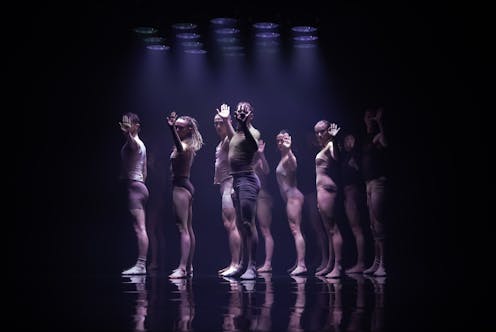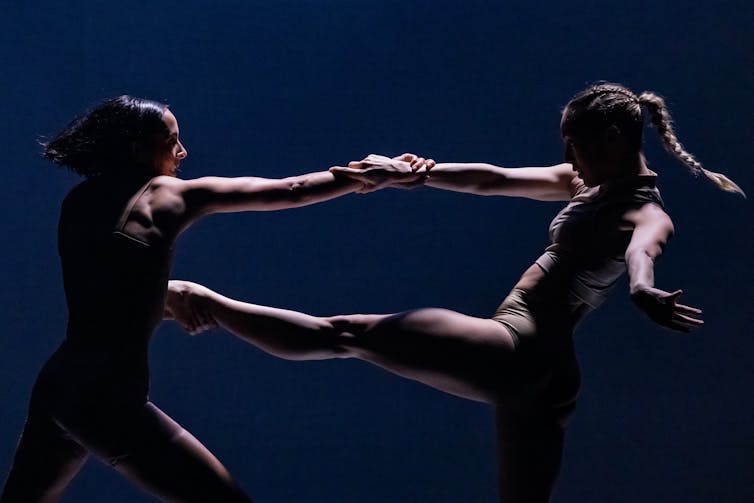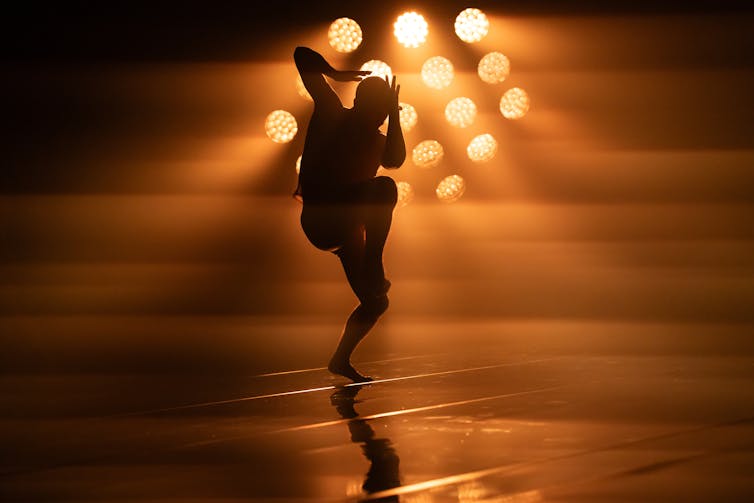Source: The Conversation (Au and NZ) – By Yvette Grant, PhD (Dance) Candidate and Dance History Tutor, The University of Melbourne

Artistic director Rafael Bonachela’s latest work for the Sydney Dance Company, momenta, had its Melbourne premiere on October 8 at the Playhouse Theatre in the Arts Centre.
Bonachela says that he wanted the full-length work to represent both momenta – the plural form of momentum from the Latin movimentum – and moments.
And it does exactly that.
The work is a maelstrom of macro and microcosmic momentums, capturing mundane and monumental moments.
The 17 dancers move through unmarked yet distinct worlds of perpetual motion.
Sometimes they are suggestive of atoms under a microscope that collide and react, constantly forming new molecules and compounds. They randomly meet each other in physical entanglements, only to move on in a moment to another cluster of moving bodies.
Other times they evoke the relentless rolling of the sea with waves of unison movement. These repetitively sweep in one line after another through the bodies as they traverse across the stage.
Still other times they stand in distinct separation in a grid pattern with minimal but identical movements that beat like a collection of pumping hearts.
The movement never stops. It gains momentum.

SDC/Pedro Greig
The dancers become human and through a series of duets we encounter the momentum of relationships.
A solo from within the crowd shows us the secret internal flows of emotion that are a relentless apsect of the human experience.
Using lighting, one intimate scene seems to capture the flickering motion of old grainy film. It briefly transports the audience back in time to a voyeuristic peep show.
Damien Cooper’s lighting design acts as the narrator throughout, directing our attention to small sections of the action or opening the whole stage. The lights are rigged on a large horizontal circle over one side of the stage. It starts near the stage’s surface and moves incrementally, upward scene by scene, sometimes tilting at angles. It is suspended and moves silently until it is no longer visible, at which point it begins its decent.
The colour palette of the lighting – whites, yellows, browns, greens and blues – changes the mood from hot to cool, soft to hard, today to yesterday.
Elizabeth Gadsby and Emma White’s costumes are mostly neutral tones with some black accent pieces. They provide almost nude surfaces on which the lighting plays. As the work progresses some of the costumes of the male dancers are removed as they appear bare-chested, even more naked, implying an increasing emotional exposure.
The dancers show extraordinary vulnerability, athleticism and stamina.
There is a consistency and persistence to the movement quality in momenta: sweeping, sliding, extending and contracting in cyclical patterns which contain traces of elements of the patterns that came before them.
It is breathtaking.

SDC/Pedro Greig
Nick Wales’ score has the same cyclical nature with repeated music motifs. The score is varied in an imitation of life and includes musical solos on viola and piano, contrasted with orchestral pieces and percussive and electronic elements.
In momenta’s penultimate scene dancers spread out evenly across the stage and dance in unison. The scene is very light but with a black background when suddenly silver sparkles begin to fall from above. There is a powerful sense of both the universe and the universal.
This cuts to a final intimate and human solo exquisitely danced by Piran Scott. In and out of the light, he slides and turns and rolls sometimes with propulsion, other times with suspense.
He brings us back to ourselves. Perpetually in motion.
The Sydney Dance Company’s momenta is on until October 12 at the Arts Centre, Melbourne.
![]()
Yvette Grant does not work for, consult, own shares in or receive funding from any company or organisation that would benefit from this article, and has disclosed no relevant affiliations beyond their academic appointment.
– ref. Sydney Dance Company’s momenta – a breathtaking study in perpetual motion – https://theconversation.com/sydney-dance-companys-momenta-a-breathtaking-study-in-perpetual-motion-240320








